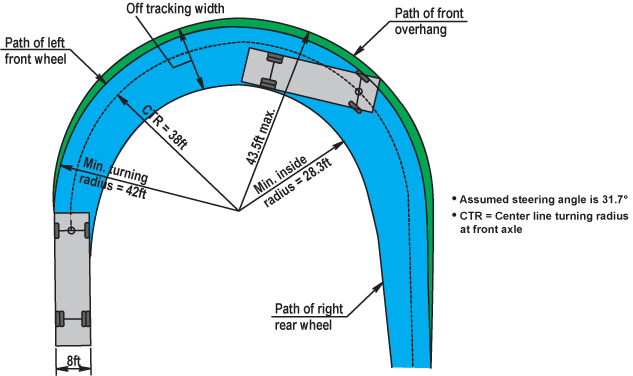Vehicle Turning Circles
Key messages • Workplace transport managers need to understand a vehicle's • size; • and • standard of. • As far as possible vehicles should not have to reverse. Questions to ask Your risk assessment should include answers to the questions: • How big are the vehicle and the load? • How easy is it to manoeuvre the vehicle?
• What is the standard of visibility (forward and mirrors) • Do vehicles need to reverse? Manoeuvrability Drivers of large vehicles, especially articulated and drawbar combinations, often need to perform complicated manoeuvres to turn safely, because the trailers swing out behind the tractive unit. This often involves taking the tractive unit in a larger circle than a car would follow. Most vehicles using European roads have to be able to turn within the space between an inner circle of 5.3 m radius and an outer circle of 12.5 m radius. If large goods vehicles are using your site, you need to make routes wide enough for them to manoeuvre safely and to pass each other with room to spare wherever possible. Visibility Forward visibility needs to be good enough to allow drivers to see and avoid hazards. Visibility is related to: • vehicle speed; • the distance the driver needs to avoid hazards – by stopping or changing direction safely; • available light; • environmental considerations such as dust or bad weather; • the height of the driver’s eyes from the road; and • the general level of visibility from the vehicle. Star Wars Jedi Knight 2 Jedi Outcast Patch 1.03 on this page.

